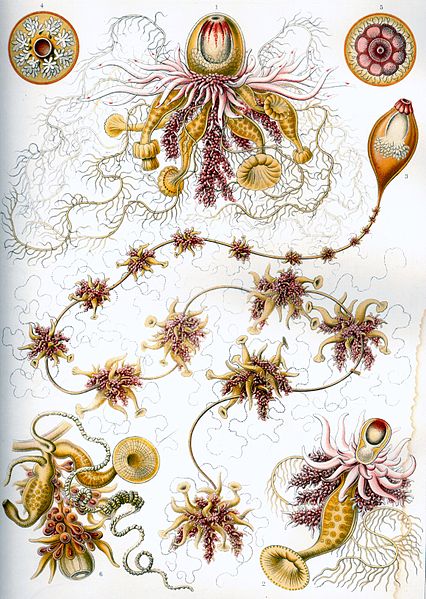Hydrozoa is a taxonomic class of individually very small, predatory animals, some solitary and some colonial, most of which inhabit saline water. The colonies of the colonial species can be large, and in some cases the specialized individual animals cannot survive outside the colony. A few genera within this class live in freshwater habitats. Hydrozoans are related to jellyfish and corals and belong to the phylum Cnidaria.
Hydrozoa
The hydroid Tubularia indivisa, fertile, Gulen Dive resort, Norway
The highly apomorphic Siphonophorae—like this Portuguese man o' war (Physalia physalis)—have long misled hydrozoan researchers.
Limnomedusae like the flower hat jelly (Olindias formosa) were long allied with Anthomedusae and Leptomedusae in the "Hydroida".
In biology, a colony is composed of two or more conspecific individuals living in close association with, or connected to, one another. This association is usually for mutual benefit such as stronger defense or the ability to attack bigger prey.
A colony of Brandt's cormorants in Point Lobos, California
A breeding colony of northern gannets on the Heligoland archipelago in the North Sea.
The pelagic Marrus orthocanna is a colonial siphonophore assembled from two types of zooids







